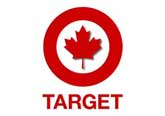| |
|
| |
|
 |
Supply
Chain by the Numbers |
| |
|
| |
- August 14, 2014 -
|
| |
|
| |
|
| |
|
| |
Target Resets Its Canada Supply Chain; USPS Parcel Volumes Surging Due to Partnerships; BMW Jumps on China Part Price Reduction Bandwagon; US Carriers Continue to Keep Fllets Flat or Lower |
| |
|
| |
| |
| |
130 |

|
|
|
| |
| |
|
10,228
|
|
Number of tractors that truckload carrier Swift Transportation had at the end of Q2, according to its recent quarterly earnings report, down from 11,021 in 2013. That despite the fact that freight demand has recently been rising by nearly all measures, including the carriers' own commentary. Now you know why capacity is increasingly tight, and rates are clearly headed higher. And Swift was hardly alone: Werner ended the quarter with 7035 tractors, down from 7150 in 2013; JB Hunt's truckload segment continues to shrink, ending Q2 with 1,860 tractors compared to 2,018 a year ago. In some fairness to the carriers, the severe driver shortage is a key factor is keeping fleet sizes low, but this is not good news for shippers.
|
| |
| |
|
| |
| |
20% |
|
Discount on auto parts sold in China announced late last week by German automaker BMW, no doubt in response to the numerous antitrust investigations the country is pursuing against Western companies across a variety of industries for selling goods in China at higher prices than they do in other markets. That is not legal in China. BMW rival Daimler had recently dropped parts prices in China an average of 15%, but that wasn’t enough to keep Chinese regulators from raiding the company’s China headquarters in Shanghai looking for evidence of excess pricing. This is a very big issue there – time to check your company's pricing levels soon to avoid fines and other sanctions.
|
| |
| |
|
|
|
| |
 |
 |
| |
|
|
| |